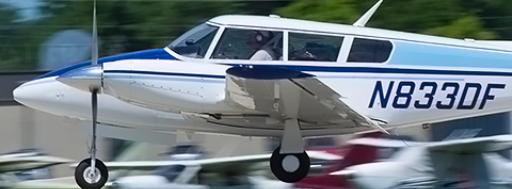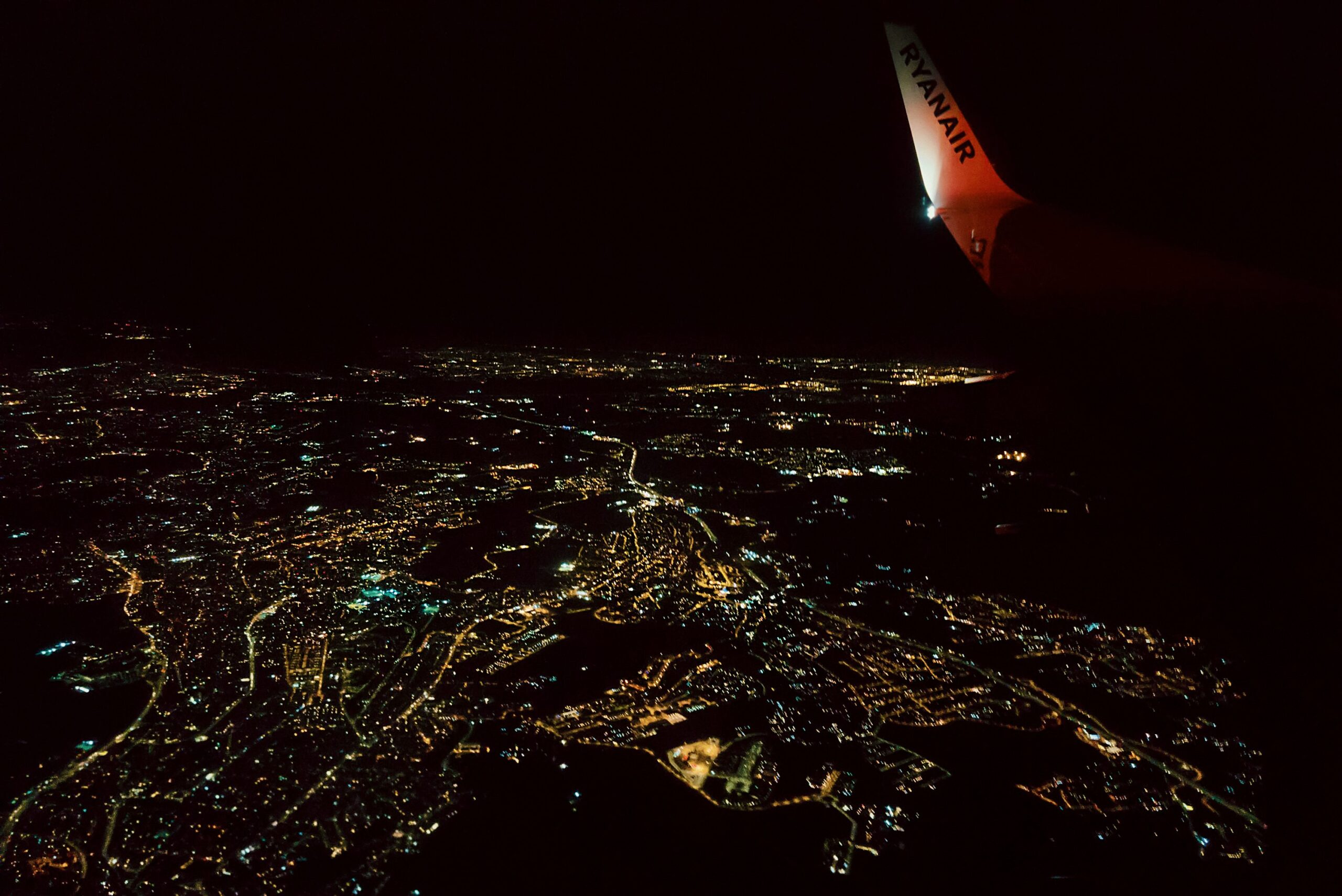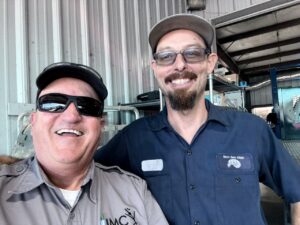Night departures aren’t inherently dangerous, but they do carry additional risks that should be considered.
This is an account of the first three minutes of our second night departure on this date. Jeff is the talented mechanic and pilot that keeps the airplane in such great shape, and would be my right seat this evening. After the nights events, Jeff and I talked about it and even thought this might be a useful scenario to run in a simulator for other crews. What began as a cool and easy night flight became overly busy in a heartbeat. We both fell back to the fundamentals to get through a high workload sequence of events.
The length of our day is pertinent to this discussion, as it generates fatigue for everyone. That fatigue becomes a factor, so bear with me as I describe our day.
Start of the day: Jeff and I were up and about early, around 7am, finding coffee for our wives and thinking about breakfast. Weather was forecast to be clear for the planned departure out of Sarasota, FL airport. Food at the hotel had been excellent, so we enjoyed the coffee and breakfast before our 11am checkout.
I had opted not to use the Go Rental company right at the FBO. Their rates are considerably higher and the last time I used them when I was flying my own airplane, they hammered me pretty good on unexpected fees. I rented from Enterprise over at the main terminal, so that meant we’d have to drop the wives at the FBO and then return the rental car on the other side of the airport. We’d UBER back over to the FBO after that, and probably saved my company $300 in the process.
First stop – prepping the airplane: We left the hotel and drove to the FBO to get the Cheyenne set up for the trip home. Beverages were already in the onboard cooler, so I grabbed a bag of ice from the FBO and put that in to chill them down initially. Emptied the trash and loaded all of the crew luggage in the nose, followed by a basic walk-around of the aircraft. Finally, we fueled the airplane for the longer first leg, and would do a more detailed pre-flight before departure.
In the meantime, the client sent a text asking if the 5pm would work. I had previously told him that I wasn’t comfortable with a night IMC flight (bad weather) after what I’d known would be a long day for the crew. I just didn’t want to be flying and landing after midnight. As it happened, weather was perfect and I informed him that 5pm would be just fine. Clear weather all the way home. I had been planning for a rental car return at 2pm, so I went online to extend that to 4pm.
Second stop – Lunch: We had about 5 hours to kill at this point, so we stopped for lunch at Chik Filet in Bradenton. The four of us had a nice break in a clean restaurant, and talked about our time in Siesta key. After lunch, we still had just about 4 hours before we’d have to leave. I suggested we check out a YouTube mechanic that Bev and I follow, just to see if he was there. I’d love to introduce myself.
Third stop – Rainman Ray: Rainman Ray is a car mechanic who has an interesting online presence. Bev and I have been following him on YouTube for several years, and had tried to meet him a few times in the past. We never found him at the shop before this, but lucked out today. All I did was introduce myself, and ask to have my picture taken with him. Just a fun stop that helped us kill some time. Ray seems like a very nice guy, just like on YouTube.
Fourth Stop – FBO and Rental Return: The next stop was back to the FBO to drop off the wives. Jeff and I then filled the car with gas and drove to the other side of the field to find the rental car return. The entire process with Enterprise at Sarasota was excellent and seamless. We processed out of the car and found an UBER back to the FBO in short order.
Pre-flighting and killing time: This is the life of a charter pilot. We were all prepared for our trip home, but still had about 2.5 hours left until departure. I find it best to be in place and ready, just in case the client shows up early or some issues arise that were unanticipated.
I walked out on the ramp to refresh the ice in the cooler and begin my pre-flight. One of the lineman generously offered to move the airplane closer to the FBO before the client arrived, so I agreed to that. Unfortunately, the jet parked in front of me soon started his engines in preparation for his own departure. I conducted my preflight in a wash of hot jet exhaust, rich with the smell of jet fuel. My eyes are still sensitive from cataract surgery, and were not being helped at all with this torture test.
Flight from Sarasota to Wilmington, North Carolina: This leg went beautifully. We flew north as the sun went down, and the headwinds were much lighter than forecast. The night landing was my first in awhile in the Cheyenne, and was smooth. We had flown the ILS to runway 06 in clear conditions as an offset to the increase risk of night flying in general. Very easy flight on a beautiful evening – just prime for complacency.
Flight from Wilmington, North Carolina to Wilmington, Delaware: After refueling, we loaded everyone back onboard. I had filed a flight plan via foreflight and had shared that with Jeff. Later, i received an expected clearance in return and did not share that one (I had it ready, but didn’t share it). The clearance he received was ‘As Filed’, so we both verified that the ‘As filed’ version was programmed in. The clearance i had shared with Jeff was the valid one, and the expected clearance would be ignored. This is where the trouble began, and Murphy’s Law just made things worse.
With the engines fired up and taxi checks completed, we moved off of the ramp. I immediately noticed a caution (yellow) message on the G600 PFD stating ‘Magnetic Anomoly’. I had seen similar messages when in areas where there is a higher iron content in the ground, presumably, and expected that to not be an issue after we got moving. I did not mention that to Jeff, but it would affect my decision making later.
Jeff set all the radios up for our departure and called in that we were ready. Fatigue set in and I did not check that the transponders and radios were set up as cleared. Taxiing onto the runway for departure, all the killer items were checked good and we were ready (in my mind). As I lined up, Jeff realized several items hadn’t been configured on the avionics and set about correcting that while I delayed a few seconds on the runway. I noticed that the G600 CDI was still in localizer mode from the previous ILS approach, and fixed that. Night departures require more attention, not less. We’d both dropped the ball and were recovering.
Things begin to unravel: Immediately on departure, I set GPSS on and noticed that the GPSS annunciation was yellow. That is NOT NORMAL. The G600 CDI was set correctly, so I set about trying to diagnose the issue while flying by hand. I try a few things while flying by hand, including moving the the #2 Nav/Comm in case the issue is only with #1. The tempo is increasing.
Approach control then clears us to the ISO waypoint in the middle of this, and we both realize that the clearance we think we are on is different than the one they think we are flying. The ‘Expected Route’ is what they expect us to fly, and the ‘As Filed’ route is what we are flying. The #2 Nav/Comm would have to be changed to reflect the ‘Expected Route’, and Jeff wasn’t familiar with how to do that.
So now I am flying by hand and thinking the the earlier Magnetic Anomoly was some indication of a GPS problem, or at least part of the reason why the autopilot is not behaving. Jeff is having trouble correcting the flight plan using the new to him avionics. I am busy on my side and would just like ISO waypoint entered so I can have something to navigate to as soon as possible. We can sort everything else out later, once we have initial guidance.
I get the airplane moving to the correct altitude and to a heading I guessed at, while look down to my iPad in an attempt to get an initial course to ISO. I am flying by hand, in a climb, at night, while finding the expected clearance message so I can communicate that to Jeff and maybe even copy that onto ForeFlight for uploading to the GTN750.
Jeff reaches over to try something on the PFD, which is the only thing I’m relying on at the moment. I snapped a bit. Stay over there and leave this alone until we sort this out. Thankfully, he understood and remained engaged. My fatigue was showing and I felt it.
One thing I did right before we left on the first leg was to brief Jeff on common issues that crews encounter during night departures; particularly along the coast and over water. I asked him to monitor my climb to ensure that no distractions caused me to relax the back pressure on departure. That is exactly what happened when Jeff called out that I was not climbing to my altitude, but had leveled off while looking at my iPad. I refocused and verified I was in a turn and not climbing, so I immediately brought my attention back to instrument flying. Good job Jeff.
Back in the groove now, and still flying by hand, I leave the flight plan issue to Jeff and focus on why the autopilot cannot be used. Getting the autopilot up and running would free me up to resolve the flight plan issue rather quickly. It was then that I realized that the GTN750 CDI was still in LOC mode and not on GPS. I changed that right away, but that didn’t fix the issue either because we were pointing to the #2 NAV/COMM at this point in the flight. Duh!
I changed the #1 Nav/Comm CDI to GPS and switched the PFD to look there. Jeff figured out how to change the #2 Nav/Comm CDI to GPS (it is in a different place than the GTN 750), and then figured out how to insert the ISO waypoint on the #1 flight plan. With the CDI set on the PFD and on the Nav/Comm and the autopilot in Heading mode with GPSS set, we finally had the autopilot available.
I engaged the autopilot and flew on while Jeff entered the Expected Clearance in place of the As Filed Clearance. This entire process lasted just three minutes, but it was a busy three minutes.
Lessons Learned: Training is a good thing. We briefed and monitored each other; prioritized aviation; navigation; and communication, and kept working the problem.
I was the PIC on this flight and did not cross check Jeff on the clearance and avionics setup prior to departure. I’d become complacent with him always nailing it, and I failed to back him up on a night flight. Murphy’s Law kicked in when ATC cleared us ‘As Filed’ in the middle of the autopilot issue, when in fact the clearance they had us on was the ‘Expected Routing’. Ask for a full route clearance if there is any confusion.
The autopilot was unavailable because of mis-setting the CDI between the G600 PFD and the two Nav/Comms after we’d flown an ILS. Negative transference from my own airplane procedures, and from the magnetic anomoly message, delayed me from finding this issue. This entire process is fully automated in my airplane, so I need to remember that.
Changing the CDI on the GTN650 is unique and different from the GTN750. I never thought to look for that, but you can bet neither of us will forget it now.
Final word: Both Jeff and I have solid individual and crew skills. We understood and discussed the added risks with night flight and particularly with night IMC flights. We both worked together to keep the airplane flying well until all of the ducks got back into a row, and then flew home just fine. It was just three minutes of confusion, but enough to renew my desire to get it right the next time.
Fly Safe.
Frank


